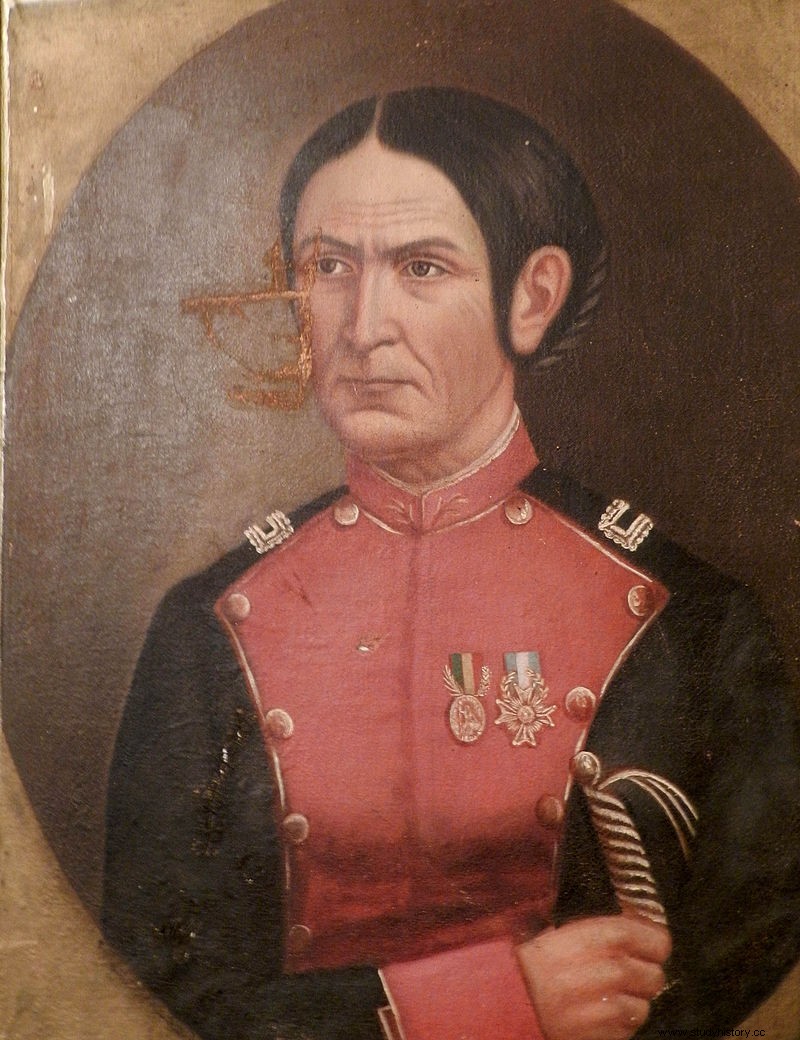Juana Azurduy de Padilla (1780 or 1781 – 1862) was a South American revolutionary, active in the revolution in the region of “Alto Peru” or Upper Peru, present-day Bolivia.
The Chuquisaca Revolution
 Of half Spanish and half indigenous origin, Juana Azurduy de Padilla was born on July 12, 1780 or 1781 in Chuquisaca ( current Sucre in Bolivia, then located in the Viceroyalty of the Río de la Plata). His mother, Doña Eulalia Bermuda, a native, married a wealthy Spanish landowner, Don Matías Azurduy.
Of half Spanish and half indigenous origin, Juana Azurduy de Padilla was born on July 12, 1780 or 1781 in Chuquisaca ( current Sucre in Bolivia, then located in the Viceroyalty of the Río de la Plata). His mother, Doña Eulalia Bermuda, a native, married a wealthy Spanish landowner, Don Matías Azurduy.
Orphaned at a young age following the assassination of her father, Juana grew up in Chuquisaca, raised by her aunt Petrona with whom she had a bad relationship. She is learning to speak Spanish, Quechua and Aymara. At the age of twelve, his foster family sent him to a convent but was expelled from it five years later for his frequent rebellions. Determined not to live the tidy existence expected of women at the time, she frequented revolutionary groups.
In 1805, she married Manuel Ascencio Padilla, who shared her interest in the revolution and the defense of the natives. Both joined the Chuquisaca Revolution on May 25, 1809 and fought royalist troops, resulting in the dismissal of the incumbent governor and the formation of a local government committee.
Ejercito del Norte
In 1811, the royalists regained control of Upper Peru, confiscated the properties of the Padillas and captured Juana Azurduy de Padilla and her four children. Freed by Manuel, they take refuge in the mountains, recruit troops and pursue the guerrillas, joining General Manuel Belgrano and his ejercito del Norte (Army of the North). Exposed to hunger, malaria and dysentery, the couple's four children died in the mountains. Shortly after, Juana gave birth to a daughter, Luisa Padilla, as the fight approached. Traitors among her men, seeing her weak, take the opportunity to steal the loot and attack her. Her child in her hand, she fights them with a saber before managing to escape on horseback. Subsequently, she entrusts Luisa to a guardian to continue the fight with her husband.
Colonel
In 1816, Juana Azurduy de Padilla led and won an attack on Cerro Rico de Potosí, sacred place for the indigenous populations including the silver mines that made the Spanish colonial power. For this feat, she was promoted to Lieutenant-Colonel by the Supreme Director of the United Provinces of Rio de la Plata Juan Martín de Pueyrredón. On November 14 of the same year, Juana was wounded in battle and her husband, who was trying to protect her, was killed. She then leads a counterattack to recover his body. Juana then assumed command of the guerrillas, fleeing to northern Argentina to continue the fight under General Martín Miguel de Güemes. She would have up to 6,000 men under her command. On the death of Güemes, cruelly lacking in means and support, Juana quickly finds herself in financial difficulties and decides to return home, to the newly created Bolivia, where she lives with Luisa. In 1825, Simón Bolívar granted him the rank of colonel and a pension. He would have said:"This country should not be called Bolivia in my honor but Padilla or Azurduy because they are the ones who freed it . »
Juana Azurduy de Padilla spent several years trying in vain to recover her confiscated property. In 1857, the pension granted by Bolivar was taken away from him. She died in oblivion and destitution on May 25, 1862 in Chuquisaca, and was buried without honors in a common grave. It was not until a century later that his remains were exhumed to be kept in a mausoleum in Sucre.
